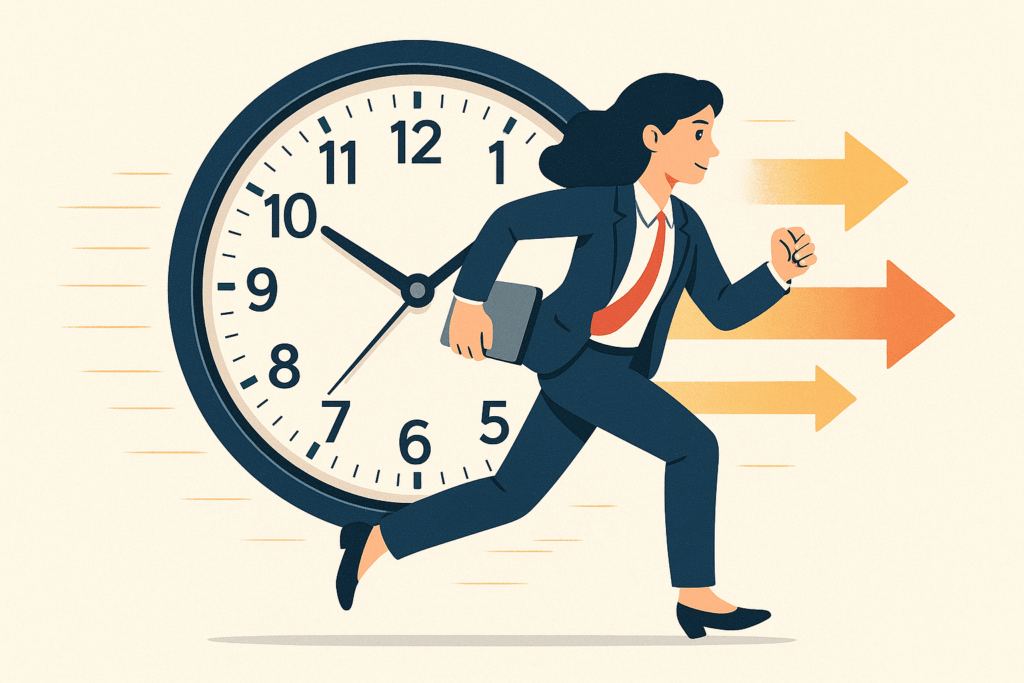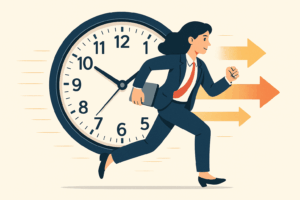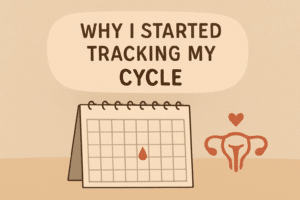Done!
I’m staring at a to-do list that started with twenty items. Lunch can wait. Taking a walk can wait. I’m zooming through the list and before I know it, I’m already down to just four items. A week later, the same list feels infinitely long and daunting. It takes me two hours to get through one assignment.
“Noo, not another email.” As I reply on my phone, I’m postponing plans and putting off errands just to get a couple extra hours in bed.
I have friends who are already working full-time jobs, trekking to work every day like it’s the same. But is it the same?
We expect the same level of productivity from ourselves each day but how can this be sustainable if our bodies and minds are constantly transitioning through different parts of our cycles?
Hey everyone! It’s Pranitha again, and here are my thoughts and some research on hyperproductivity.
Some weeks, our hormones support sharp focus and high energy. Other weeks, they pull us toward introspection and rest, yet our culture still expects linear output [1]. It’s the steady, uniform, and predictable hyperproductivity that we chase, as if our internal world is a machine instead of a cycle [1,2]. It’s like demanding spring energy from yourself during an internal winter. As one article describes it, “ … within the neoliberal economic environment, health is inseparably linked to productivity such that improving productivity often falls under the guise of improving worker health” [1].
Being gentle with yourself, even when you have the energy to go on overdrive, can prepare you for a gentler landing when the luteal and menstrual phases kick in [3]. Something I started doing since January of this year is blocking off an hour for lunch on my calendar every day. I don’t schedule meetings during it. On days that I don’t need the full hour, I take the extra time to go on a walk with music. I’ve also been mindful of sitting and working for hours at a time. I often take five to ten minutes to stand up, stretch, and maybe take a short walk. Some of my best ideas and thoughts come during these walks and not while I’m sitting and staring at my laptop screen. These breaks aren’t procrastination but rather habits that will maintain balance as what our bodies need keeps changing [2].
There’s an entire other layer we rarely acknowledge when it comes to hyperproductivity: our best friend, stress. During the luteal phase leading up to menstruation, our bodies are already working harder [4]. Cortisol is the hormone our bodies produce in response to stress. It’s the same hormone that contributes to burnout, fatigue, cravings, mood swings, and sleep disturbances, among many other symptoms, if it stays elevated [4,5]. When we pile on pressure to keep performing at the same intensity, cortisol climbs, symptoms intensify, and we may feel even more drained or irritable [5,6]. At any point during our cycles, stress-management is not a luxury or indulgence. It’s a strategy to support our bodies and minds.
They’re ways of supporting a body that’s physiologically doing more than we can see [6]. Let’s honor the bouts of rest in between the chronic cycles of productivity that we chase.
What are two small things you can add to your day to honor your cycle and follow your hormonal lead? How about taking ten minutes of your lunch break for a walk in some afternoon sunlight? Maybe read a couple pages of that book you’ve been trying to finish or finally start that podcast episode you wanted to listen to?
References
- Hajkova, A., & Doyle, T. A. (2024). Hacking the Cycle: Femtech, Internalized Surveillance, and Productivity. Philosophy & Technology, 37(4), 123. https://doi.org/10.1007/s13347-024-00801-4.
- Hardy, C., & Hunter, M. S. (2021). Premenstrual Symptoms and Work: Exploring Female Staff Experiences and Recommendations for Workplaces. International Journal of Environmental Research and Public Health, 18(7), 3647. https://doi.org/10.3390/ijerph18073647.
- Heinemann, L. A. J., Minh, T. D., Filonenko, A., & Uhl-Hochgräber, K. (2010). Explorative Evaluation of the Impact of Severe Premenstrual Disorders on Work Absenteeism and Productivity. Women’s Health Issues, 20(1), 58–65. https://doi.org/10.1016/j.whi.2009.09.005.
- Ko, C.-H., Wong, T.-H., Suen, J.-L., Lin, P.-C., Long, C.-Y., & Yen, J.-Y. (2024). Estrogen, progesterone, cortisol, brain-derived neurotrophic factor, and vascular endothelial growth factor during the luteal phase of the menstrual cycle in women with premenstrual dysphoric disorder. Journal of Psychiatric Research, 169, 307–317. https://doi.org/10.1016/j.jpsychires.2023.11.019.
- Vannuccini, S., Clemenza, S., Cassioli, E., Rossi, E., Castellini, G., Ricca, V., & Petraglia, F. (2023). Uterine Fibroids, Perceived Stress, and Menstrual Distress: A Key Role of Heavy Menstrual Bleeding. Reproductive Sciences, 30(5), 1608–1615. https://doi.org/10.1007/s43032-022-01126-3.
- Weon, H. W., & Son, H. K. (2023). An Analysis of Menstrual Symptoms, Menstrual Attitudes, Physical Stress and Psychological Stress According to the Menstrual Cycle Phase. Iranian Journal of Public Health, 52(6), 1161–1169. https://doi.org/10.18502/ijph.v52i6.12958.





